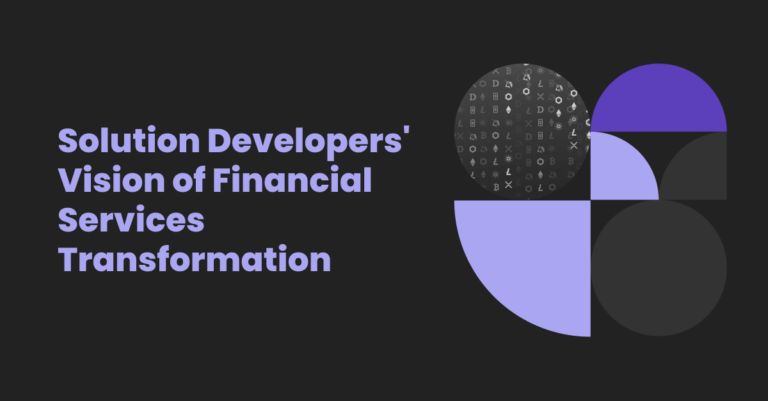Software as a Service (Saas) business is huge. According to 2020 statistics, 38% of companies say that they’re currently running almost exclusively on a SaaS business model, a massive 73% of businesses say that they’re planning to make all their systems run on SaaS by the end of this year, and an even higher 86% say that businesses that use a SaaS business model see relatively higher staff engagement.
Cloud automation solutions have earned an even more prominent role in recent months. The world of 2020 is a hostile environment for business since the advent of Covid-19. The pandemic has disrupted as aspects of daily life for millions of people, laying waste to businesses the world over. Amidst this chaos and uncertainty, the remote delivery of technology is, quite literally, a life-saver.
And among the applications of the Cloud, Software-as-a-Service (SaaS) takes a front seat.
Cloud and SaaS: A Short Intro
The core idea of a cloud automation solution is the delivery of software via remote devices (servers, usually), to any device with an internet connection, anywhere in the world. The software can be anything from a smartphone app to a full game for a game console, and anything in between. Netflix, Amazon Prime, or Spotify are good examples of well-known brands using Saas business models.
In a SaaS model, the vendor hosts the software (Netflix and Amazon Prime host movie files, Spotify hosts music, and so on) in their servers. They are responsible for maintaining their IT infrastructure, etc., and use the customer’s internet connection as the means of delivery. How does the customer pay? Subscription. Most companies using a SaaS model use customer subscriptions to pay for their services. The customer pays a regular amount, so they can continue enjoying the streaming of movies in the case of Netflix, or keep playing their favorite games online (Xbox Live is another popular example of a SaaS business model. Players pay a regular subscription that enables them to play online, download games, etc.)
Why Is Process Automation the Right Solution?
SaaS startups face tough choices. Hard competition, shifting market trends, and other factors tend to put pressure on business leaders who walk a fine line between ambition and limited budgets.
SaaS business models have emerged as viable solutions for startups whose resources might be limited. Cloud automation software eliminates many overheads, for example, allowing business owners to focus on getting things done.
SaaS solutions offer distinct advantages for SaaS startups adopting process automation:
- System expandability
- Deployment pipeline
- Code structuring
System Expandability
SaaS models offer the possibility of granular expansion. That is the addition of new components over time, without the need to alter the core platform. This minimizes backward compatibility issues, for example, while presenting excellent expansion potential.
Deployment Pipeline
A roadmap to deployment is a must for any SaaS startup. There are multiple reasons for this.
A deployment pipeline enables:
- Faster delivery
- Better software development culture
- A more robust approach to the platform’s architecture
Ultimately, a deployment that meets all guidelines and deadlines will be more successful overall.
Code Structuring
Coding is, by necessity, highly structured. Good practice for programmers requires that they format and indent their code so that their colleagues can glance, understand, and visualize what the code is supposed to do. A system written with clear, unambiguous, and clutter-free code will be easier to understand and maintain.
Evaluating the Financial Impact of SaaS V On-Premise Deployments
SaaS presents an immediate and crucial advantage over on-premise hardware setups installations:
On-premise deployments usually require a substantial financial outlay upfront to purchase expensive equipment like servers, etc., which are also costly to maintain in the long run due to maintenance and support fees, etc. On the other hand, SaaS models are funded via subscription, which generally includes the software license, access to updates, and other expenses in the monthly subscription fees. In short, no sizeable financial outlay upfront.
But this is hardly SaaS’ only advantage. A SaaS model provides the startup with far greater flexibility at a time when it’s needed the most. SaaS offers frequent (and free, remember? Your software can be immediately updated when a newer version is available, assuming that you pay your monthly subscription fee.) This immediacy and ease of access mean that startups no longer need to rely on a dedicated IT department (in-house or outsourced, and we recently discussed the pros and cons of this ). Staff can simply update their software themselves.
The Rise of SaaS in the Face of Global Adversity
Internet access is now virtually global, bar a few remote corners of the world. This in itself is an amazing feat of human technology, but for business -particularly SaaS business models-, is a godsend. Within seconds, people have a world of information literally at their fingertips. For SaaS startups, this means that proprietary software applications can be delivered to the end, subscription-paying user, immediately, remotely, over the internet. Anytime, anywhere.
Take the current global situation, for example. The coronavirus pandemic has devastated the business landscape across the world. Big-name airlines such as Japan Airlines and American Airlines have sustained grievous losses.
Yet, Cloud business is thriving. The reasons behind this are evident. The pandemic has forced companies around the world to rethink their strategy. With millions of staff now working from home, the need for Cloud integration has never been greater. This brings up full circle back to the core principles of Cloud business: Remotely and the internet. The pandemic has made it clear that remote work is possible, but it’s necessary. SaaS businesses are doing extremely well. Video-conferencing app Zoom is an obvious example. In its recently posted fiscal results for Q1, Zoom revealed that revenue was up 169% over the previous year.
Cloud Automation Tools: Find Your Perfect Match
Here’s a list of the most prominent cloud automation tools currently available:

















